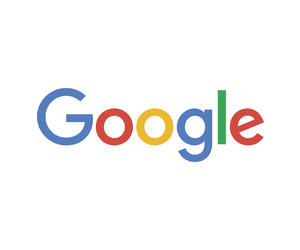Google for Education Chromebooks and Google Classroom Kick-Start Hybrid Learning
Devices are the front line of connectivity, and Google for Education Chromebooks offer a powerful means to bridge the divide between learners at home and those in the classroom. Many schools have adopted Chromebooks in support of a one-to-one device deployment: When students work on common devices — whether at home or in a classroom — it’s easier for teachers to deliver a uniform learning experience.
“Chromebooks are just so easy to use,” Andrade said. “You just turn it on and it loads up everything you need.”
Ease of use frees up teachers to focus on building a shared classroom experience for those in class and those at home, rather than having to spend time troubleshooting. Moreover, the seamless implementation of learning applications helps to ensure that students encounter a level playing field — that they are able to leverage a unified set of tools, whether they are learning remotely or in person.
Because most applications run in the cloud rather than on the device, Chromebooks offer a simplified means to support a uniform learning experience, regardless of location. With G Suite for Education, students can have ready access to a common set of tools, while teachers can leverage a unified suite of management capabilities to drive a common classroom experience, even in a hybrid environment.
MORE ON EDTECH: How to accommodate students with disabilities using chromebooks.
Google Classroom, a free learning management platform available to anyone with a Google account, offers a virtual educational space that supports interactive learning while reducing the classroom management burden on K–12 teachers. In this shared space, they can post assignments, communicate with students as a group or as individuals, and deploy and grade quizzes — all from a single consolidated platform.
“The collaborative piece is key to supporting hybrid learning,” Andrade said. “No matter where students are, they have access to everything. And the specific applications — Docs, Sheets and Slides — are all collaborative, so students can work on projects together from anywhere, on any device.”
In hybrid learning, this collaborative environment helps educators deliver a common learning experience to students, regardless of their location.
“That’s where the teachers and students can interact, where they can get everything done regardless of where they are physically situated,” Andrade said. “There’s no need to go anywhere else because everything’s connected to that. The students log on in the morning, they see their assignments for the day, they know what they need to be doing.”
For schools that have made the move to one-to-one devices, Google Classroom creates a unified environment for those learning in person and those working online. In the hybrid ecosystem, all students start the day the same way: by opening their Chromebooks and accessing Google Classroom.
Teachers can use this initial engagement to do social-emotional check-ins with students at home and to confirm that hybrid learners are all keeping pace with assignments. This helps ensure hybrid learners don’t fall through the cracks. Classroom’s shared space supports these key encounters and delivers the detailed record-keeping needed to ensure that students in diverse locations are able to stay on the same page.
“When my own daughter was home from first grade in the spring, it was a pain just trying to keep track of what was due,” Andrade said. “They started using Classroom more, and then it became so easy. The kids know where to go, and as a parent you get a report so you can see everything that needs to be done.”
LEARN MORE: How to drive remote learning success with google for education tools.
Chrome Education Upgrade Puts Schools in the Driver’s Seat
Behind the scenes, the Chrome Education Upgrade gives administrators the power to effectively manage computing needs across the hybrid environment.
The enhanced management license “gives you full control over those devices,” Andrade said. “You can lock it down, so if you don’t have a school account, you can’t get into that device. You can manage all the applications on the device, keep them all current, and turn them on and off depending on who needs them.”
Centralized management also makes it easy to deploy third-party tools such as GoGuardian, an internet filtering application, across an entire fleet of devices.
With G Suite for Education, it’s easy to give students access to important productivity tools such as word processing and spreadsheets. Google Jamboard, an interactive whiteboard system, allows teachers to broadcast visuals onto a flat panel or classroom projector for those learning in class, while simultaneously sharing the content directly with students learning online.
Google also makes available a range of supporting materials, including a parent’s guide, to ensure that those learning at home stay in sync with their in-class peers.
Given the ease of use and intrinsic integration of Google’s powerful educational tools, it is likely that these capabilities will remain a classroom mainstay even after COVID-19 fades into history.
“Students who forget their homework will log in to Google Classroom when they get home and just pull it up,” Andrade said.
Brought to you by:













